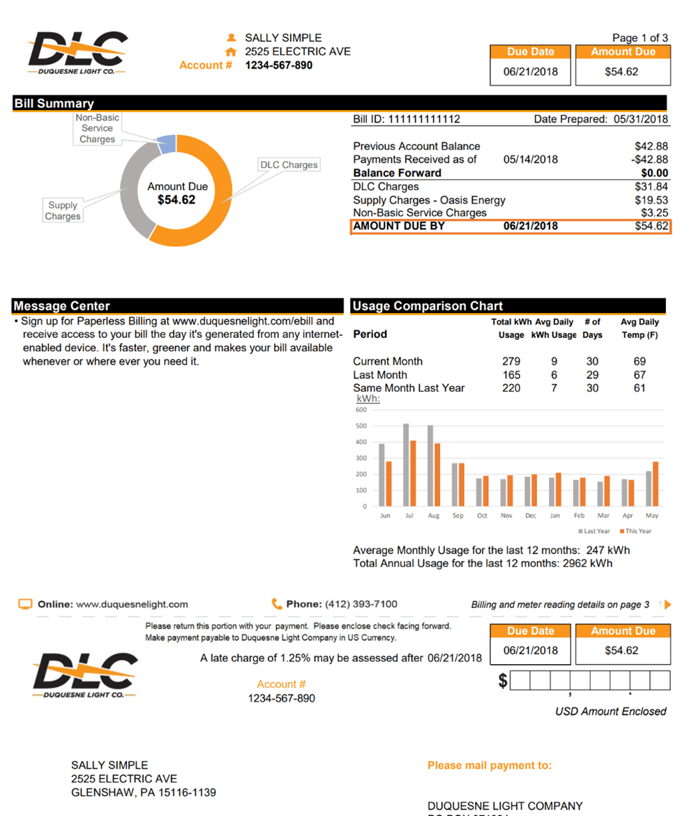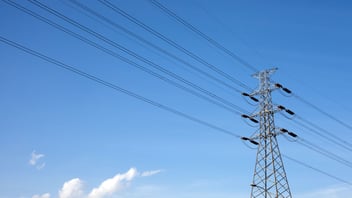How to Read Your Utility Bill: Duquesne Light Co.

If you’re a commercial or industrial customer in our Pennsylvania service area, you’re likely getting your utility bill from several companies. In this article, we’ll look at the utility bill details for Duquesne Light Co. (DLC). We’ll review what you’re paying for, break down your supply and delivery charges, and highlight where you can save. For reference, we’ve spelled out some of the typical language on your bill, like how to read kilowatt-hours (kWh).
Your DLC bill includes:
- A 10–13-digit account number
- Account balance
- Supply and delivery charges, electricity usage chart
- Meter reading usage information
On the first page of your DLC utility bill, you’ll notice your account balance, due date, and usage comparison chart. Your chart displays the total kWh usage and average daily usage of your current month, including last month, and the same month last year. You’ll also see a quick snapshot of other charges like:
- DLC Charges – services necessary for the physical delivery of electricity service, such as supply, including default service, transmissions, and distribution.
- Supply Charges – basic service charges for generation supply to retail customers.
- Non-Basic Service Charges – any category of service not related to basic service.
Page 2 includes a reference guide for additional charges on your bill.

Supply Charges
On page 3, you’ll find additional information about your supply charges.
Delivery Charges
Page 3 not only breaks down your supply charges, but also your DLC charges and meter reading usage information. Your DLC charges list your distribution charge (also known as delivery charge), sales tax, customer charge, and a PA tax adjustment. Your distribution charges are your basic service charges for delivering electricity over a distribution system to the home or business from the transmission system. Additional charges include:
- Distribution System Improvement Charge (DSIC) – A charge for company investment to improve service quality and increase safety by repairing, improving, or replacing eligible infrastructure used to deliver electricity.
- Transmission charges – basic service charges for the cost of transporting electricity over high voltage wires from the generator to the distribution system.
| Key Takeaways |
|



